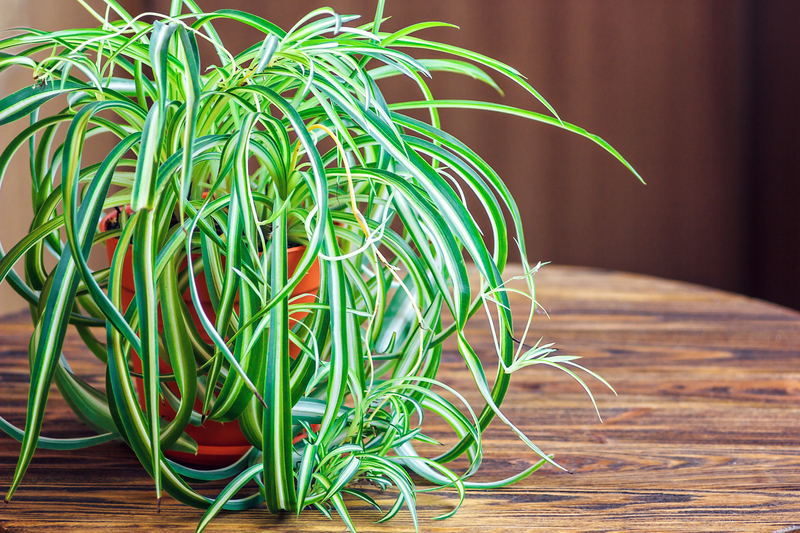Guard Your Lawn against Drought Stress with These Summer Tips
Is your once-lush lawn turning dry and lifeless as summer heat waves roll in? Drought stress on lawns is a common challenge, but with the right knowledge and techniques, you can keep your turf green, healthy, and resilient. In this comprehensive guide, you'll discover actionable summer lawn care tips and water-saving strategies to help your grass withstand drought without sacrificing curb appeal.
Understanding Drought Stress on Lawns
Before we dive into practical tips, let's first explore what drought stress really means for your yard. Drought stress occurs when grass doesn't receive enough water to support its growth and health. High temperatures, low rainfall, and intense sunlight can all contribute to soil moisture loss, leading to symptoms like:
- Wilting or folding blades
- Grass turning grayish or brown
- Slow recovery from foot traffic
- Thinning patches and bare spots
Why Lawns Suffer in the Heat
During hot summers, several factors can exacerbate drought stress:
- Evapotranspiration: High temperatures cause water to evaporate quickly from both the soil and grass blades.
- Shallow roots: Lawns with shallow root systems struggle to access water deep in the soil profile.
- Compacted soil and poor drainage: Prevent water from seeping down to grassroots.
- Mowing and traffic: Excessive mowing or foot traffic puts additional strain on stressed turf.

Essential Tips to Protect Your Lawn from Drought Stress
Now that we understand the causes and signs of drought damage, let's dive into practical steps you can take to guard your lawn against drought stress this summer.
1. Water Wisely and Efficiently
Proper watering habits make all the difference during heat waves. Instead of frequent shallow watering, deep, infrequent watering encourages roots to grow deeper, making your lawn more drought-resistant.
- Water early in the morning (between 4 a.m. and 9 a.m.) to reduce evaporation losses and allow grass blades to dry before evening, minimizing disease risks.
- Apply about 1 to 1.5 inches of water per week (including rainfall), ideally in one or two sessions.
- Use a rain gauge or empty tuna can to measure how much water your sprinklers deliver.
- Focus on soaking the soil 6 to 8 inches deep for maximum root reach.
- Consider drip irrigation or soaker hoses for targeted delivery and less waste.
Avoid watering during midday. It not only wastes water through evaporation but also can cause leaf burn in high heat.
2. Adjust Lawn Mowing Practices during Drought
How and when you mow has a big impact on your turf's ability to survive a dry spell. Follow these drought-smart mowing strategies:
- Raise your mower blade - Keep grass at least 3 to 4 inches tall, as taller grass grows deeper roots and shades the soil, reducing evaporation.
- Never cut more than 1/3 of the blade length at once to minimize stress.
- Keep mower blades sharp to avoid ragged, torn leaves that lose water quickly.
- Leave grass clippings on the lawn (grasscycling) to return moisture and nutrients to the soil.
- Mow less frequently during hot, dry spells to avoid stressing the grass.
3. Enhance Soil Health and Retain Moisture
Healthy soil is the foundation for a drought-tolerant lawn. Improve your soil's ability to hold and deliver water by:
- Core aerating your lawn once a year (preferably in spring or fall) to relieve compaction and allow water to penetrate deeper.
- Topdressing with compost - Spread a thin layer of organic compost across the lawn to improve soil structure and increase moisture retention.
- Mulching around trees and garden beds to reduce evaporation and regulate soil temperature.
- Adding organic matter regularly to nourish soil microbes and improve drought resistance.
4. Fertilize with Care in Summer
While a well-fed lawn is naturally more resilient, applying fertilizer during severe drought or extreme heat can backfire by burning stressed roots. Follow these guidelines:
- Fertilize in early spring or early fall, rather than during the height of summer.
- If you must fertilize in summer, choose a slow-release, low-nitrogen formula and water it in well.
- Avoid "weed and feed" products during drought, as herbicides can stress grass even more.
5. Choose Drought-Tolerant Grass Varieties
Not all grasses are created equal when it comes to drought tolerance. Warm-season grasses (like Bermuda, Zoysia, Buffalo, and St. Augustine) are generally more drought-resistant than cool-season varieties (like Kentucky bluegrass and perennial rye). If you live in an area prone to summer droughts, consider overseeding or converting to:
- Bermuda grass - Thrives in full sun and tolerates drought well.
- Zoysia grass - Dense, soft turf that needs less water.
- Tall fescue - A cool-season choice with deeper roots for improved drought resilience.
- Buffalograss - Native to North America, survives with minimal watering.
Consult local extension offices or sod suppliers for grass types best suited to your climate.
6. Manage Lawn Traffic and Stress
Drought-stressed lawns are more susceptible to damage from foot traffic, play, and machinery. Protect fragile turf by:
- Minimizing heavy foot traffic or pet play on brown patches.
- Rotating activity areas to prevent wear in one spot.
- Postponing aerating, dethatching, or renovations until cooler, wetter weather returns.
- Temporarily reducing children's play equipment on vulnerable areas.
7. Rethink Your Lawn Design
Are you struggling to keep large expanses of turf healthy during dry spells? It might be time to embrace a more sustainable landscape design. Consider:
- Reducing lawn size in favor of drought-tolerant ground covers or native plants.
- Incorporating more xeriscaping elements such as gravel paths, mulch beds, or ornamental grasses.
- Planting shrubs or trees that naturally provide shade and reduce lawn water needs.
Detecting and Repairing Drought Damage to Your Lawn
Despite your best efforts, some drought stress symptoms may still appear in your yard. Here's how to distinguish between dormant and dead grass, and what to do next:
- Dormant grass: Drought-tolerant grasses will often turn brown and temporarily stop growing to conserve water. The roots remain alive and will recover when regular moisture returns.
- Dead grass: If the crowns (at the base of each grass clump) are brown and brittle, the grass likely will not recover and will require reseeding or patching.
Test by tugging on brown grass: If it resists and remains anchored, it's dormant. If it pulls up easily, it's dead.
Repair Strategies for Drought-Affected Lawns
After the drought subsides, help your lawn bounce back with these steps:
- Water deeply to encourage new growth from dormant roots.
- Reseed or rake and topdress dead patches for new grass to take hold.
- Apply a balanced fertilizer to gently feed the recovering turf.
- Aerate compacted areas to restore healthy soil structure.
Water Conservation Tips for a Sustainable Lawn
With increasing water restrictions in many communities, saving water is not just good for your lawn, but also for the environment. Here are some tips for sustainable lawn watering during summer drought:
- Install a rain barrel to collect roof runoff for use in gardens and lawns.
- Upgrade to smart irrigation controllers that adjust watering times by weather and soil moisture.
- Mulch garden beds and lawn edges to further reduce evaporation.
- Group plants with similar watering needs together to minimize waste.
- Set your mower to mulching mode to finely chop and return grass blades to nourish the soil.

Frequently Asked Questions about Lawn Drought Stress
How often should I water my lawn in extreme heat?
It's best to water deeply, about once or twice a week, depending on rainfall and soil type. Shallow daily watering is less effective and encourages shallow roots.
Can I fertilize my lawn during drought?
Avoid fertilizing in the peak of a drought or extreme heat to prevent root burn. Wait until cooler weather or when rain is in the forecast.
Is it worth letting my lawn go dormant?
Yes--if summer drought is inevitable, allowing your grass to go dormant is a healthy way for it to survive. Keep the soil from completely drying out by applying about 0.5 inches of water every 2 or 3 weeks, just enough to preserve the roots.
Conclusion: Prepare, Protect, and Enjoy a Greener Lawn
Drought and heat are formidable adversaries for any lawn, but with preparation and smart lawn care, you can beat summer stress. By watering wisely, adjusting mowing habits, improving soil health, and choosing drought-tolerant grasses, you'll not only guard your lawn against drought stress, but also create a more sustainable and beautiful landscape for years to come. Remember, a little extra attention during tough weather will pay off with a lush, vibrant lawn once the rains return.
Looking for more advice on lawn care and water-wise gardening? Bookmark this guide and check back for more expert tips all season long!
